Waiting for your garden to grow can feel excruciating! Having a good time estimate in advance will help ease your antsiness.
Poblano peppers take about 3-4 months to grow from the time you plant the seeds to the time you harvest your first peppers. If you buy a seedling from the nursery, you will likely have your first bounty within 2-3 months. Once you have peppers, you will be able to decide what level of ripeness you want before harvesting.
Read on if you don’t want to go crazy waiting for growth! We’ll even explain your plants’ life cycle as a bonus.
How long does it take poblano peppers to grow?
Give it to me straight!
Poblano peppers take about 3-4 months to grow from germination to harvest. If you’re buying a seedling from the nursery, you will likely have harvestable peppers within 2-3 months.
Poblano peppers can take 3-4 months to grow from seed and are ready to harvest in about 2-3 months after transplant.
Let’s take a look at all of the poblano pepper growth stages!
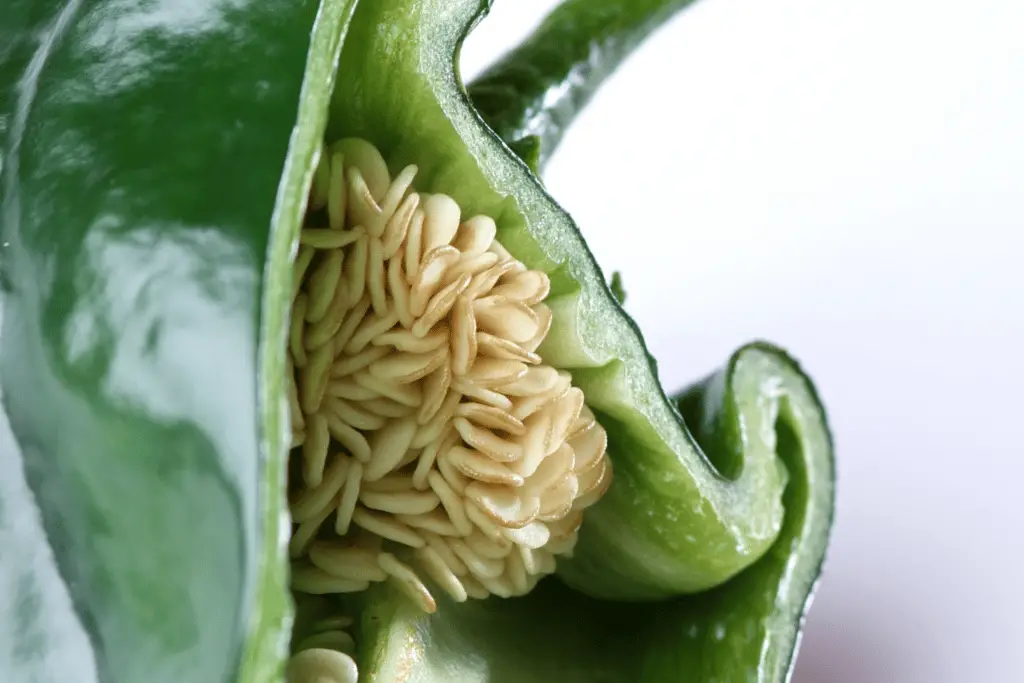
Germination
Successful germination is the first step to growing poblanos.
Seeds have an embryo and food reserves inside of them, protected by a seed coat. They’re prompted to germinate when temperatures and moisture levels cue them that it’s the right weather for growth. Poblano peppers specifically need temperatures between 70 and 80°F to germinate.
Seeds contain an embryo and a reserve of food inside of a seed coat.
They’re told to “wake up” and prompted to germinate at a certain temperature and moisture level.
Poblano peppers need temperatures around 70-80°F to germinate. Temperatures above or below this recommendation can hurt the seeds or make them turn dormant.
However, under the right circumstances, seeds are quite happy to germinate and will do so quickly!
Just like fully grown plants, seeds also respire, except they breathe in oxygen and produce CO2. Without proper aeration, this CO2 will suffocate the seed.
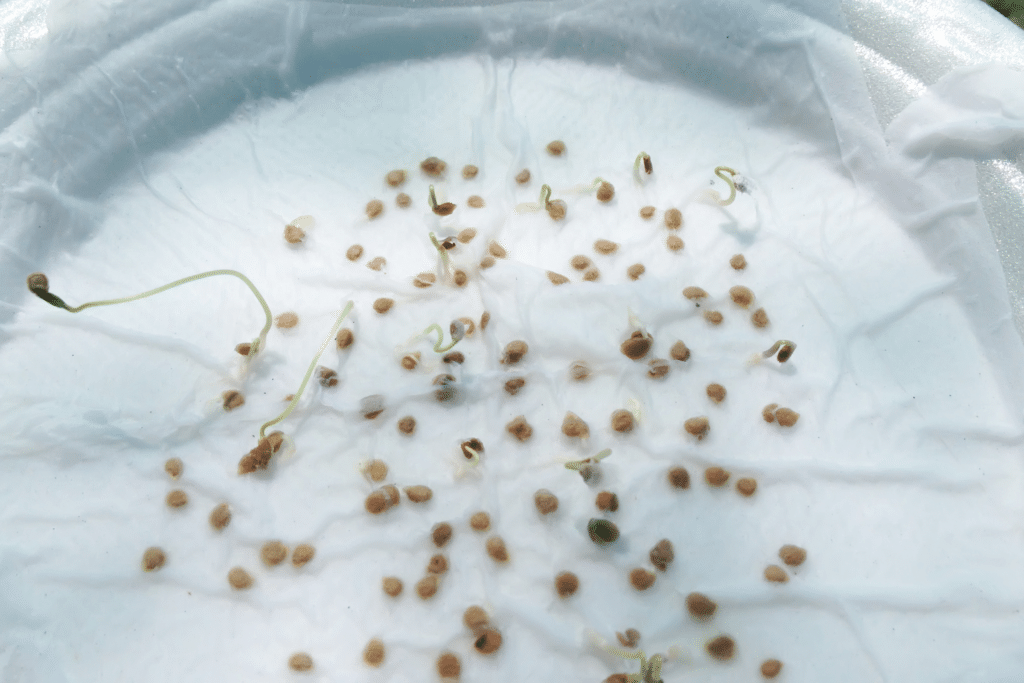
Steps of germination include:
- Imbition. The seed soaks up water and the coat softens and expands.
- Interim. The inner workings of the seed are activated and the cells start to create proteins and eat their food reserves.
- Root and radicle emergence. The cells begin to grow and divide, causing the root and radicle to emerge.
Vegetative growth
Vegetative growth can be an exciting stage where you see your poblano plants start to grow foliage!
Vegetative growth is the step between germination and flowering. Your poblanos begin to photosynthesize and grow their leaves, stems, and roots. This is important because more leaves equals more energy!
Vegetative growth takes place between germination and flowering. During vegetative growth, plants begin to photosynthesize and collect resources they will need later on to flower and fruit.
Vegetative growth includes leaves, stems, and even roots! Vegetation is very important because leaves produce the sugar the plant needs to grow. This means that more leaves equals more sugar, aka energy.
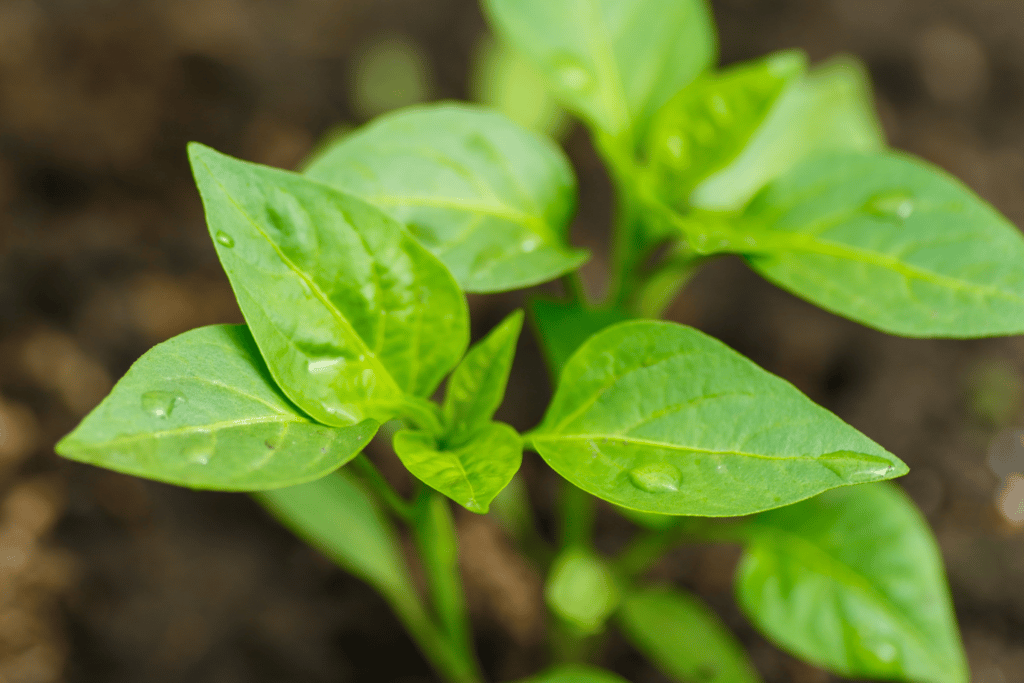
Vegetative growth is caused by two things:
- Cell development, in which more cells are created.
- Cell stretching, in which existing cells grow larger from water intake.
Vegetative growth is stimulated by having enough nutrients, water, and sun!
How tall do poblano pepper plants grow?
Flowering
Once flowers appear, you know you’re in the home stretch!
Flowers are the reproductive organs of poblano peppers and provide the basis of fruit production. Plants have their own kind of circadian rhythm that helps them know when to flower. Flowers aren’t beautiful by chance – they’re designed to attract pollinators!
Flowers are the reproductive organs of many plants, including poblano peppers. They provide the foundation for fruit to grow.
Scientists have long wondered how plants know when to flower. The time of flowering is vital in order to line up with pollinator life cycles and grow fruit at the right temperatures.
Knowing when to flower “involves a sequence of molecular events, a plant’s circadian clock and sunlight.” This is all thanks to special genes within plants.
Studies are being conducted in the hopes that manipulating flowering timing can help increase yields.
One of the last things to note is that flowers have evolved to attract pollinators, so their beauty is no accident!
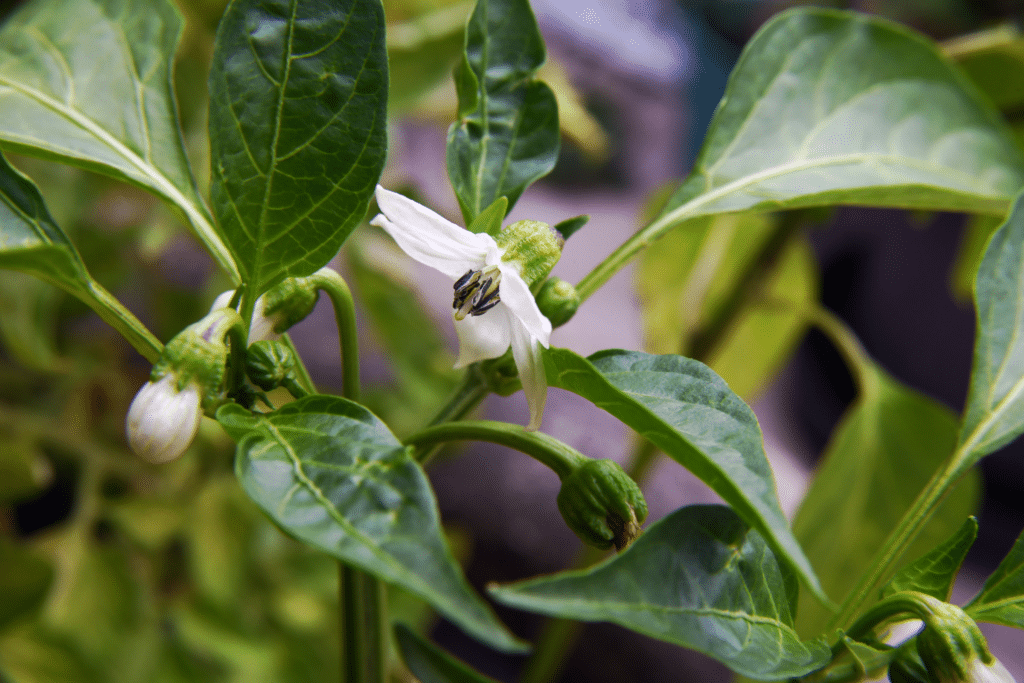
Pollination
But flowers alone aren’t enough.
Pollination is the act of pollen moving from the anthers to the stigma of a flower. Poblanos have “perfect flowers” which means that each of their flowers has both male and female flowers. This allows them to self-pollinate. Bees, butterflies, insects, water, and wind all make pollination possible.
Pollination is when pollen is moved from the anthers to the stigma. Poblanos have what are known as “perfect flowers,” meaning each flower contains both male and female parts. This allows for self-pollination.
When you think of pollination, you probably think of honey bees and butterflies. You’d be about right! Bees and butterflies, along with the help of other insects, water, and wind, all play a major part in pollinating poblano pepper flowers.

Fruiting
Finally, peppers!
Once the poblano flowers are pollinated, their ovaries will grow into peppers! While the ovules begin to form seeds, the ovary wall turns fleshy. Although peppers are technically fruits known as “true berries,” they’re considered vegetables in the culinary world.
Pollination fertilizes the pepper flowers’ ovaries. Simply put, the ovary will grow into the pepper.
The ovules start to turn into seeds. Simultaneously, the ovary starts ripening and the pericarp – aka ovary wall – turns fleshy. There are multiple layers to the pericarp.
Peppers are technically fruits – “true berries” to be exact – botanically, but are known as vegetables culinarily.
Why are my poblano peppers so small?
Ripening
Ugh, now you have to wait for the peppers to be ready!
Poblano peppers- and all fruit- ripen thanks to a hormone called ethylene. Immature poblano peppers are dark green and about 4 inches long. They have a SHU of around 1,000. Meanwhile, fully ripe poblanos are deep red, 6 inches long, and double as spicy! Poblanos can ripen on or off the vine.
Poblano peppers go through many ripening stages. You can begin to harvest them when they’re still technically “immature,” at which point their SHU will be about 1,000. Meanwhile, if you let them ripen fully, they can double in spiciness.
Immature poblano peppers are about 4 inches long and dark green. Fully mature poblanos are a deep red – almost black – and can reach upwards of 6 inches long.
Peppers will still ripen even after you pick them, making them a climacteric fruit. Ethylene is the hormone that causes fruit to ripen.
Have you ever had a fruit go bad seemingly overnight? It was likely because ethylene levels continue to rise as the fruits mature. That means the riper they are, the more quickly they’ll continue to ripen!
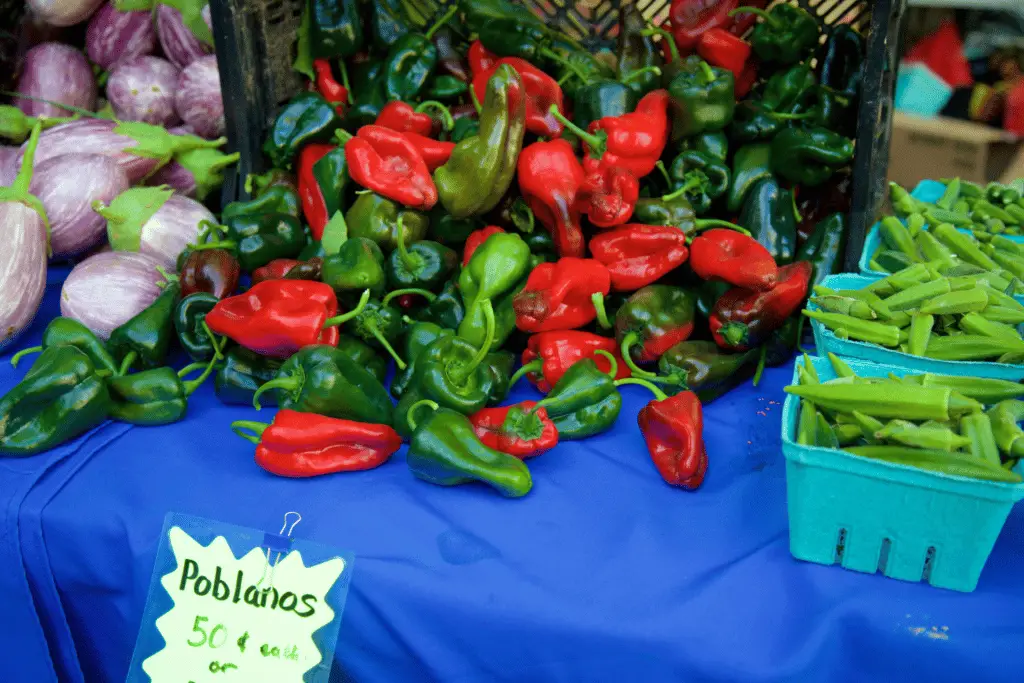
Harvesting poblano peppers
After your peppers are ripe, they are ready to pick!
Be sure to pick your peppers properly (say that five times fast!) by using clippers instead of ripping them off the plant! If you are growing poblano peppers in pots, be careful not to let the plants get so heavy that they fall over!
Can I make my poblano pepper plants grow faster?
Now that you know all of the stages behind pepper growth, you may be wondering if you can speed them up at all.
To make poblano peppers grow faster:
- Plant them in full sun
- Make sure they get 1-2 inches of water per week
- Fertilize
- Don’t overcrowd
- Harvest and prune
- Use the correct kind of soil
- Use a grow light during germination
Check out this article for an in-depth breakdown of how to make your peppers grow faster!

